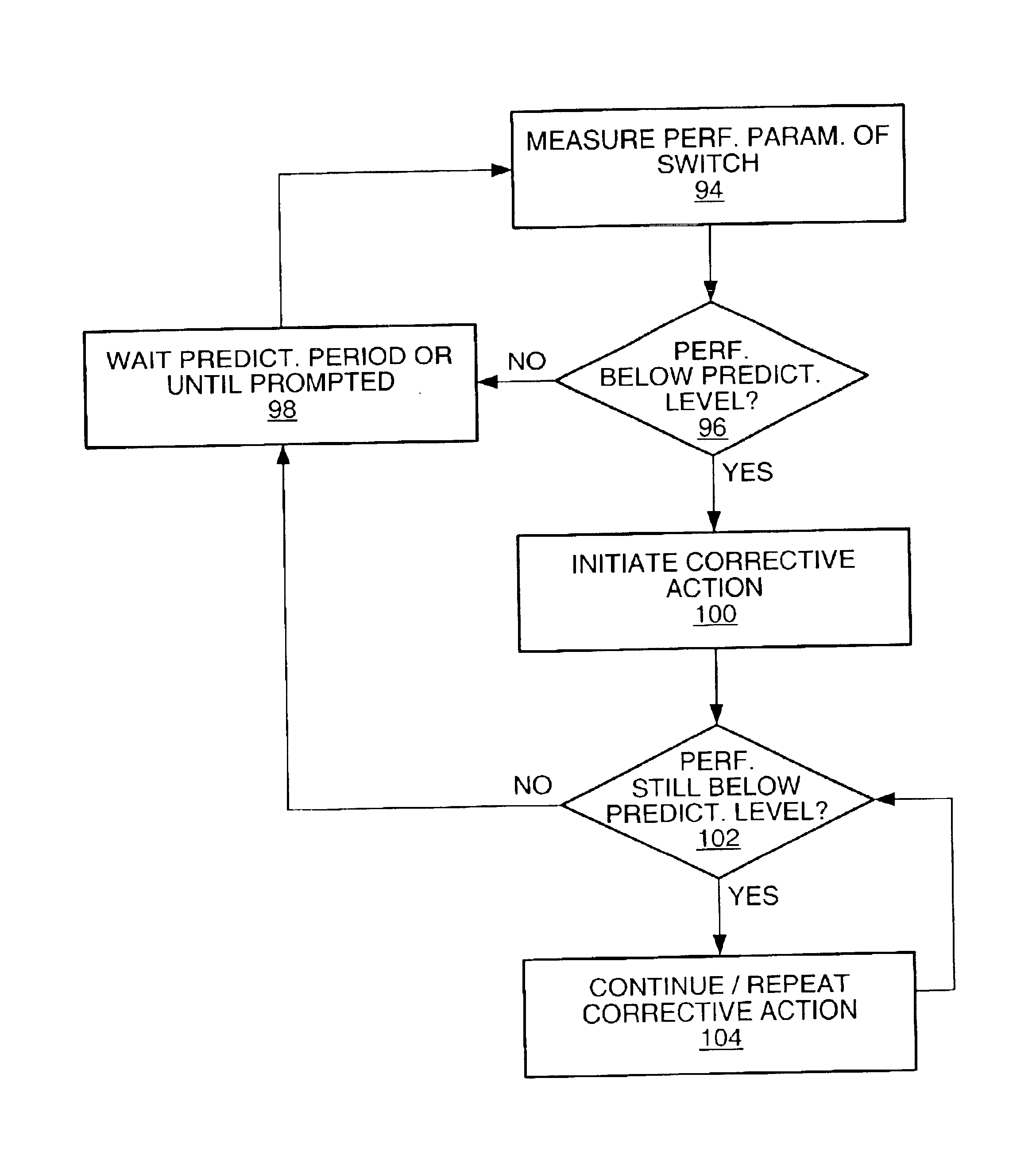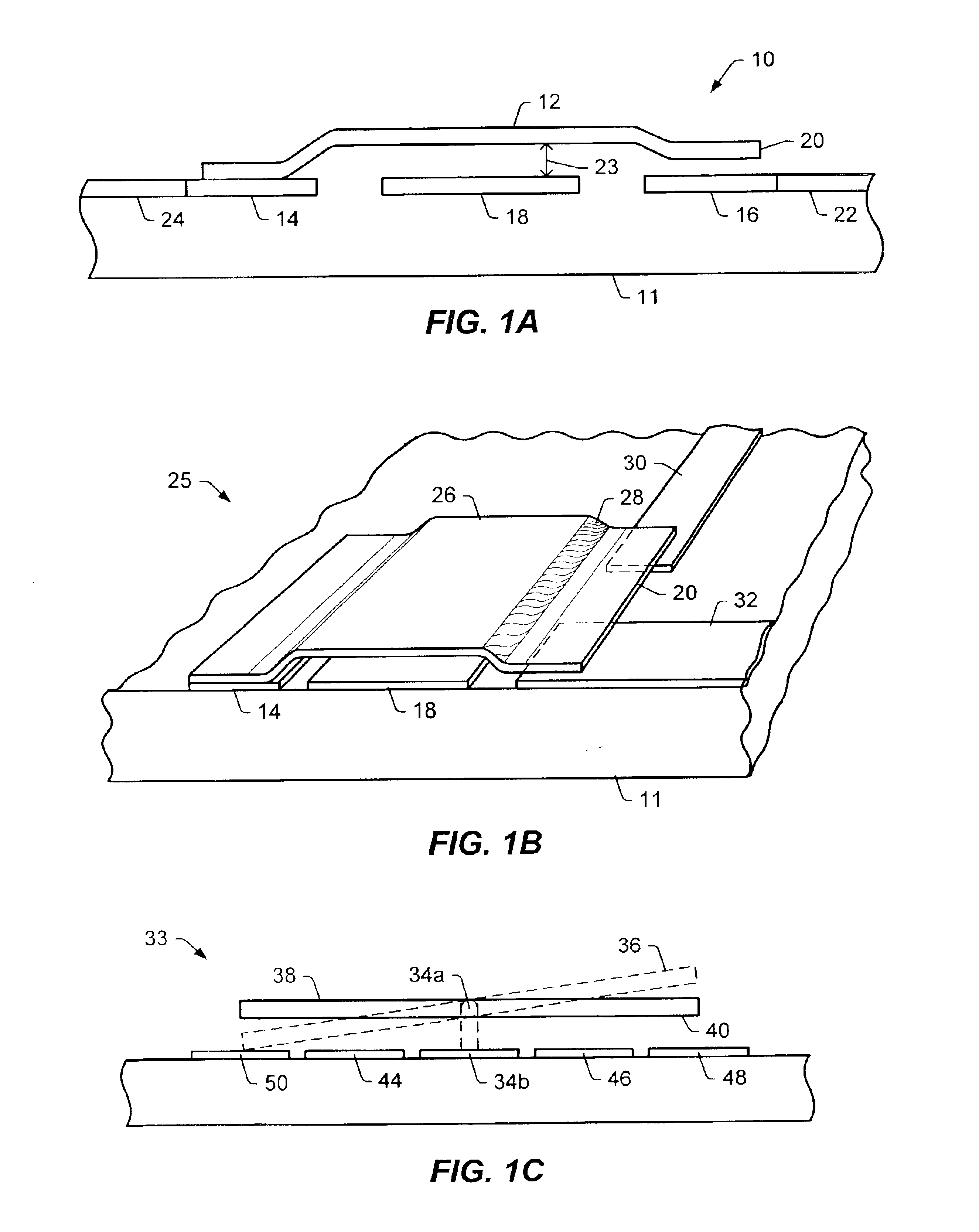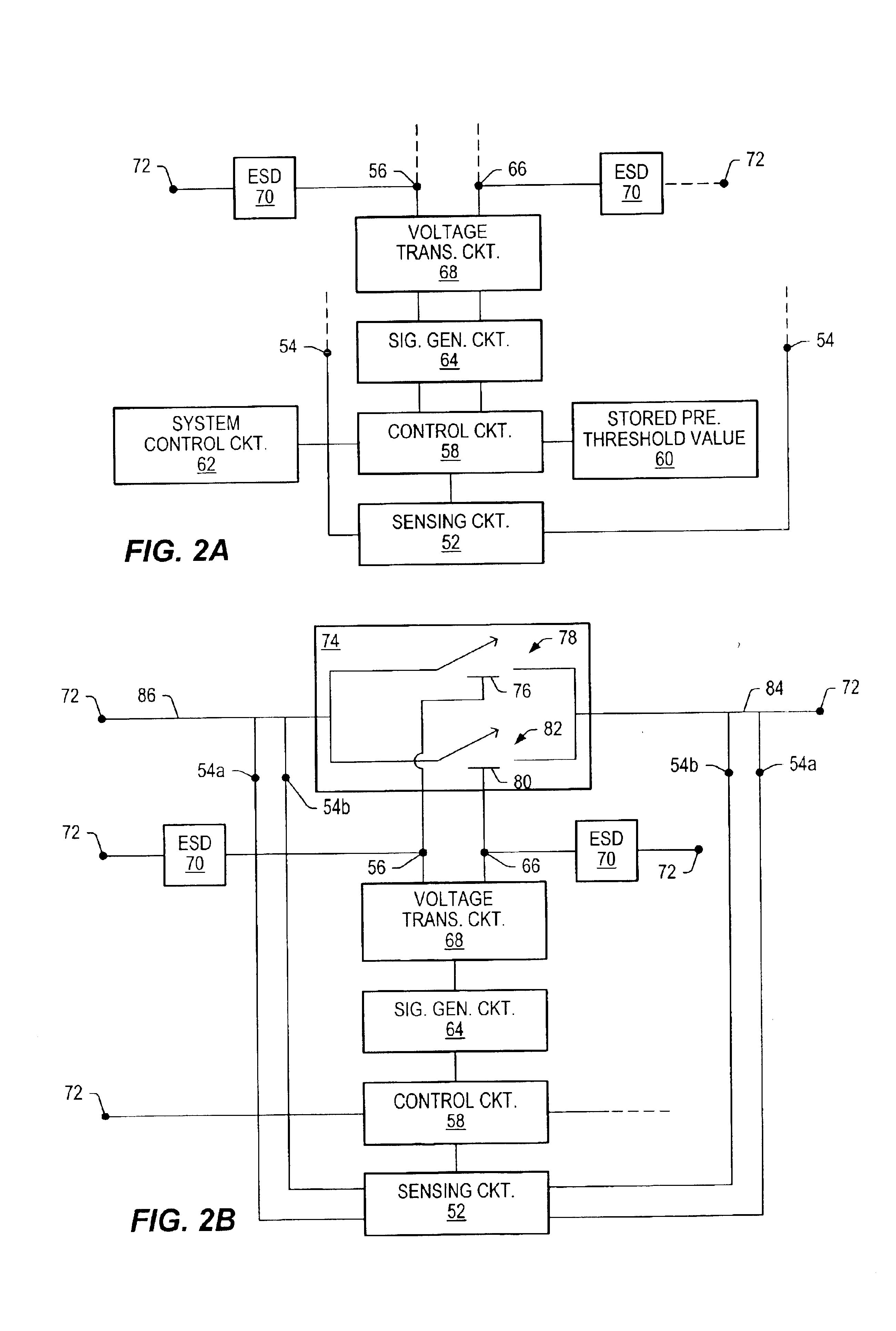Micro-electromechanical switch performance enhancement
a micro-electromechanical switch and switch technology, applied in the field of micro-electromechanical switches, to achieve the effect of improving the reliability, improving the actuation speed of the switch, and enhancing the switch performan
- Summary
- Abstract
- Description
- Claims
- Application Information
AI Technical Summary
Benefits of technology
Problems solved by technology
Method used
Image
Examples
Embodiment Construction
[0032]A cross-sectional view of a MEMS cantilever switch 10 is shown in FIG. 1A. Conductive bean 12 is fixed at one end to contact pad 14. The other end of beam 12 resides a spaced distance above a second contact pad 16 when the switch is open, as in FIG. 1. Gate electrode, or control element, 18 underlies beam 12 between the two contact pads. In the electrostatic switch of FIG. 1, application of an electrostatic potential difference between gate electrode 18 and beam 12 creates an attractive electrostatic force between them, causing beam 12 to move downward. Contact element 20 at the end of beam 12 is thereby connected to contact pad 16, so that a signal may be passed between contact pads 14 and 16 along beam 12. The switch remains closed as long as the potential is applied. Upon removing the applied potential, the spring force of the cantilever beam 12 should pull the beam back up, opening the switch. It is noted that in FIGS. 1A, 1B and 1C, as well as in the other perspective and...
PUM
 Login to View More
Login to View More Abstract
Description
Claims
Application Information
 Login to View More
Login to View More - R&D
- Intellectual Property
- Life Sciences
- Materials
- Tech Scout
- Unparalleled Data Quality
- Higher Quality Content
- 60% Fewer Hallucinations
Browse by: Latest US Patents, China's latest patents, Technical Efficacy Thesaurus, Application Domain, Technology Topic, Popular Technical Reports.
© 2025 PatSnap. All rights reserved.Legal|Privacy policy|Modern Slavery Act Transparency Statement|Sitemap|About US| Contact US: help@patsnap.com



